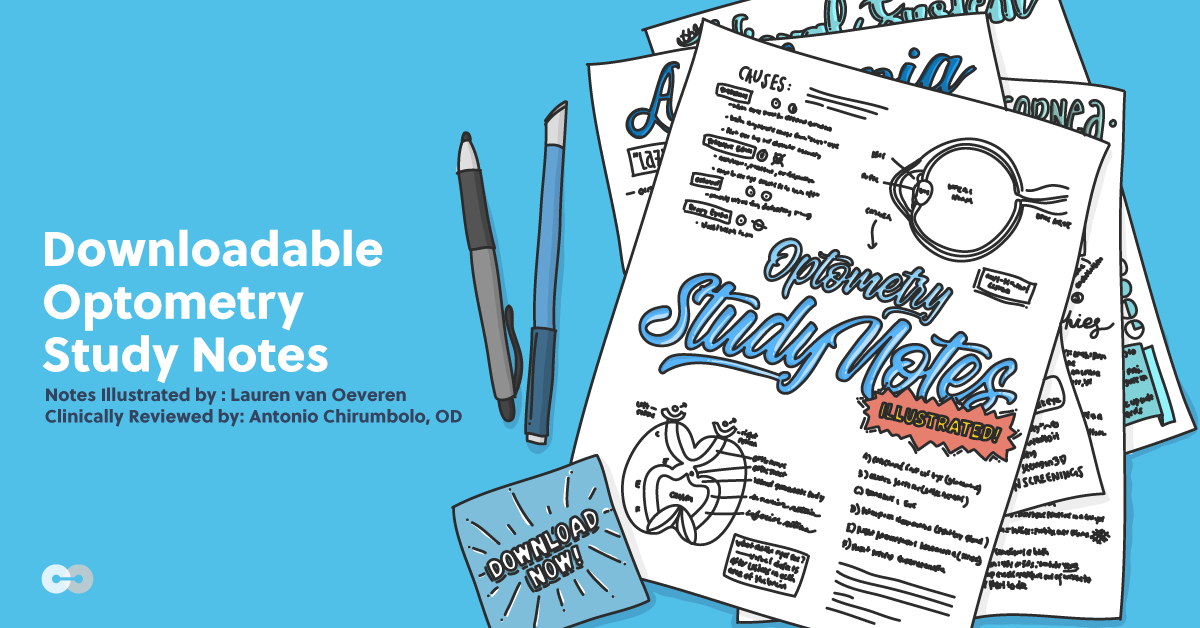Updated April 7, 2020!
There’s a place for
reference guides and bulleted lists—but sometimes only beautiful study notes will do! That’s why we’ve put together these illustrated study guides.
Whether you’re a student studying for exams or a practicing OD looking to add a little flair to your office, we hope these guides are a reminder that the medical side of optometry is beautiful as well as challenging!
These gorgeous guides cover:
- The visual system
- Layers of the cornea and common corneal dystrophies
- Amblyopia causes and treatments
- Orthokeratology definitions
- Relative afferent pupillary defects causes and tips
With even more to come! We’ll keep making these guides, so if you have a specific topic you’d like to see covered just leave a request in the comments and we’ll do our best to include it in our next release!
Download the illustrated guides!
Get all three—and updates when we release new ones!
The visual system
This guide covers the mechanisms of the visual system, and how visual information is transmitted to the brain. These notes also cover the effects of brain lesions on visual defects, such as those caused by strokes and tumors, as well as
glaucoma and
optic neuritis.
Layers of the cornea and common corneal dystrophies
These notes cover the corneal layers and the three main categories of
corneal dystrophies. Where does Bowman’s Membrane fall in relation to the stroma? Which layers do superficial corneal dystrophies affect? Use these guides to boost your review!
Amblyopia: causes and treatments
This sheet covers amblyopia, also known as “lazy eye”—the causes, symptoms, and
common treatments. Amblyopia is important to diagnose and treat ASAP, so use this guide to help teach yourself how to recognize the signs immediately!
Orthokeratology
This sheet covers the definition and purpose of orthokeratology, with tips on identifying candidates and fitting lenses!
Relative afferent pupillary defects
This page covers causes and tools for diagnosing relative afferent pupillary defects, as well as diagrams and notes on types and severity.
While we make every effort to provide accurate information that is helpful to your practice of optometry, this information may contain errors and is not to be used in place of your own professional medical judgment. Under no circumstances shall NewGradOptometry or CovalentCareers be responsible for damages arising from the use of this information.
How should you use the illustrated study guides?
Load the PDF on your tablet or desktop; print them out on cardstock or photo paper to post around your desk (or even frame in your office!); place printed sheets in your 3-ring study binder for quick reference; or use them to motivate your #handwritinggoals—it’s up to you!


